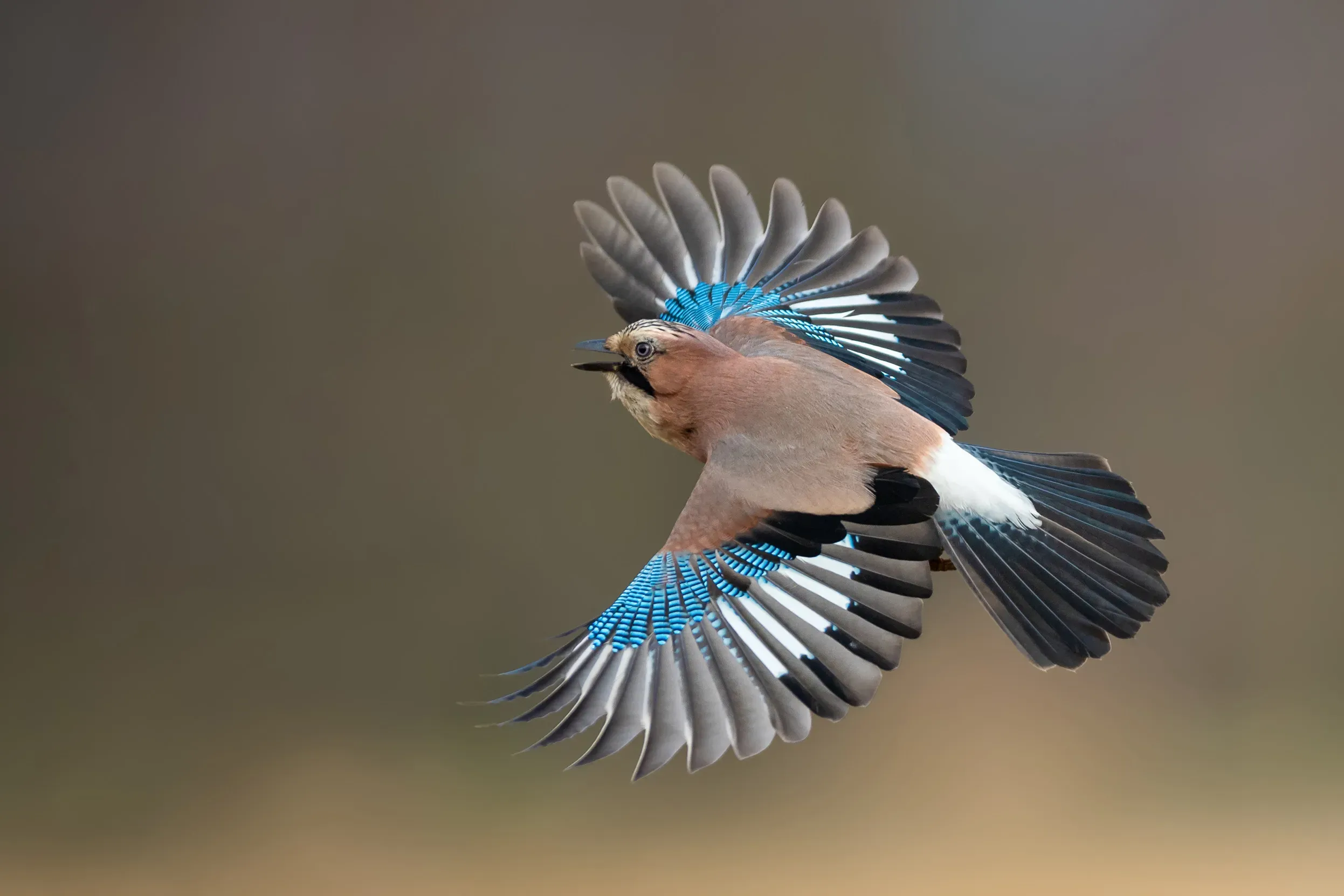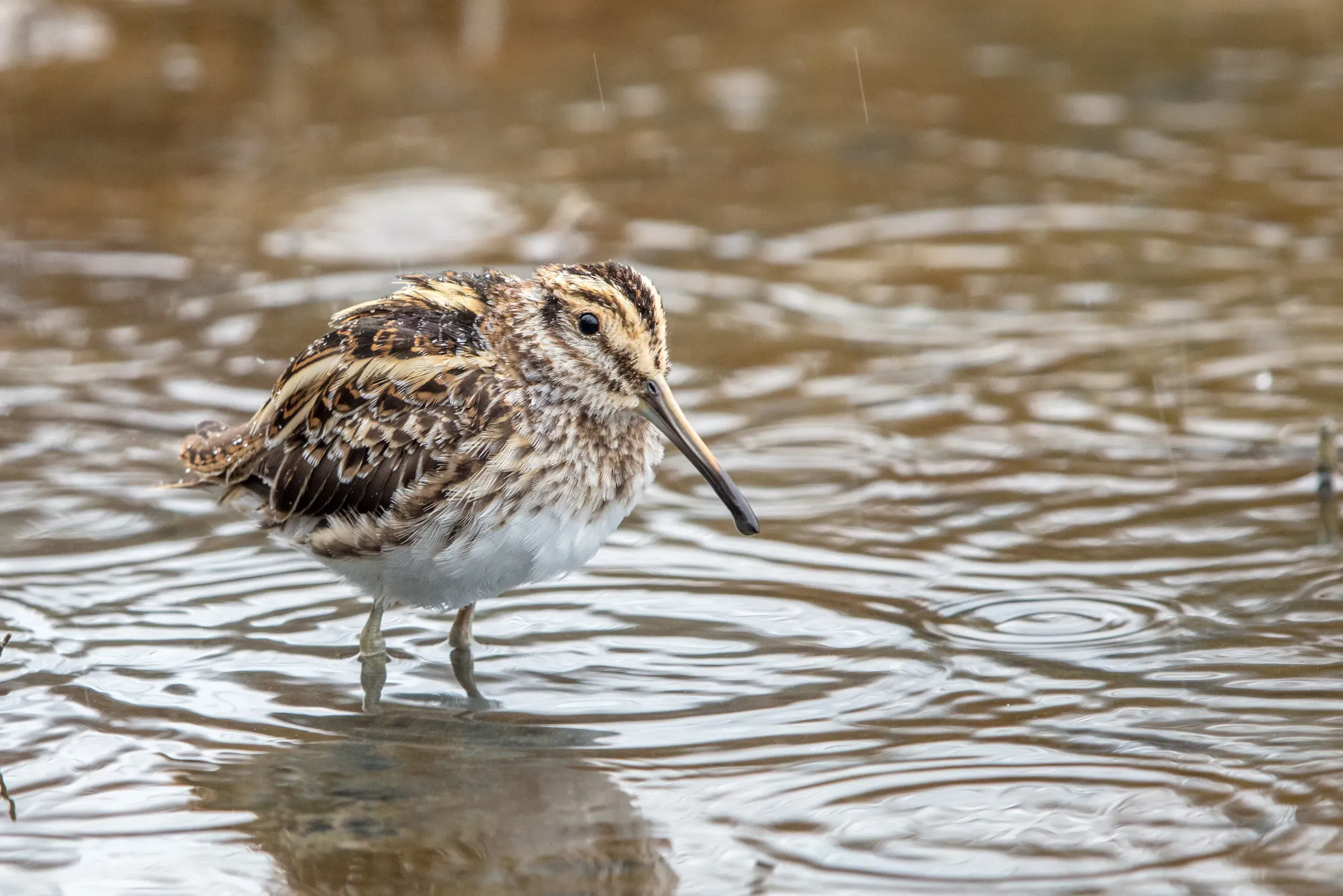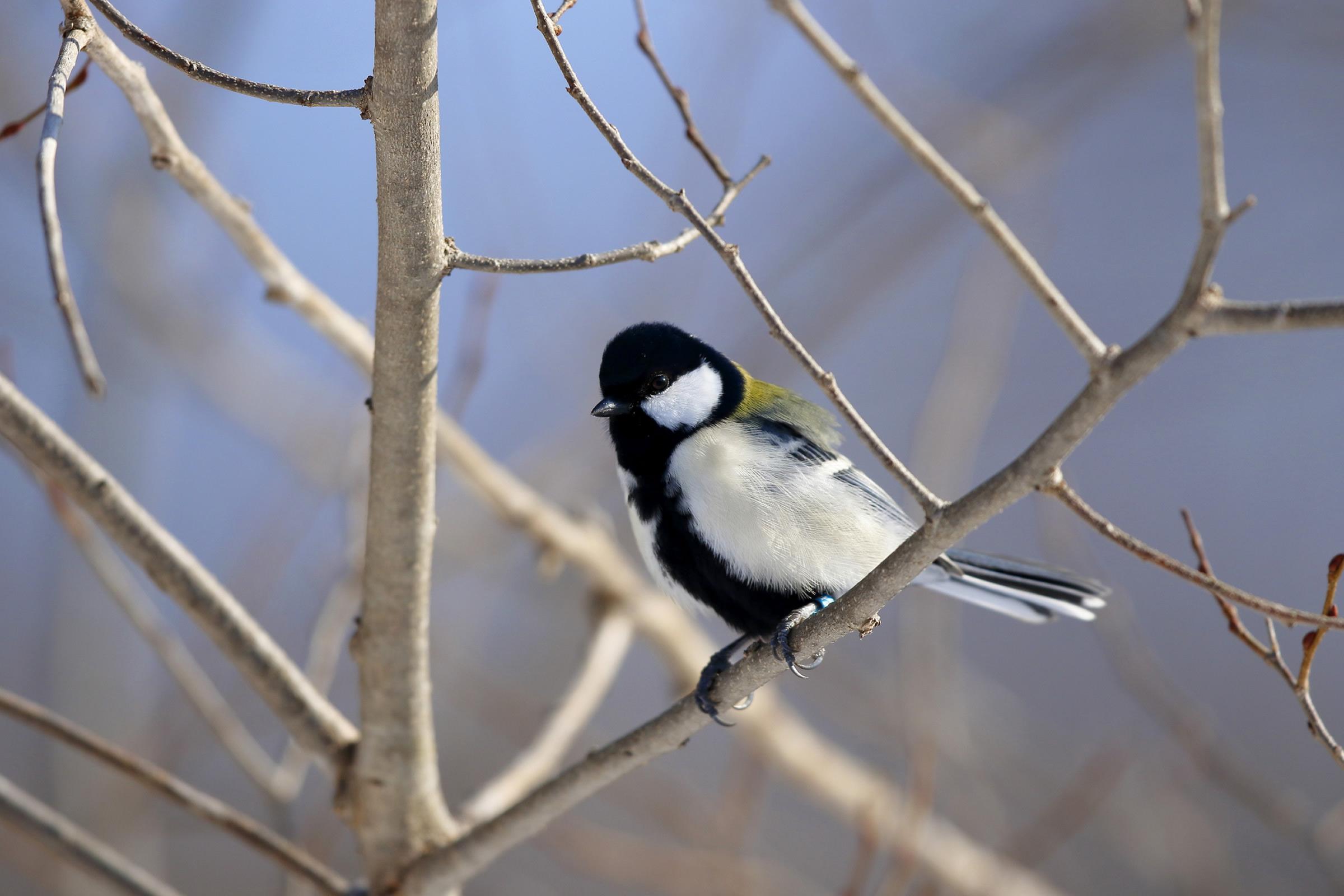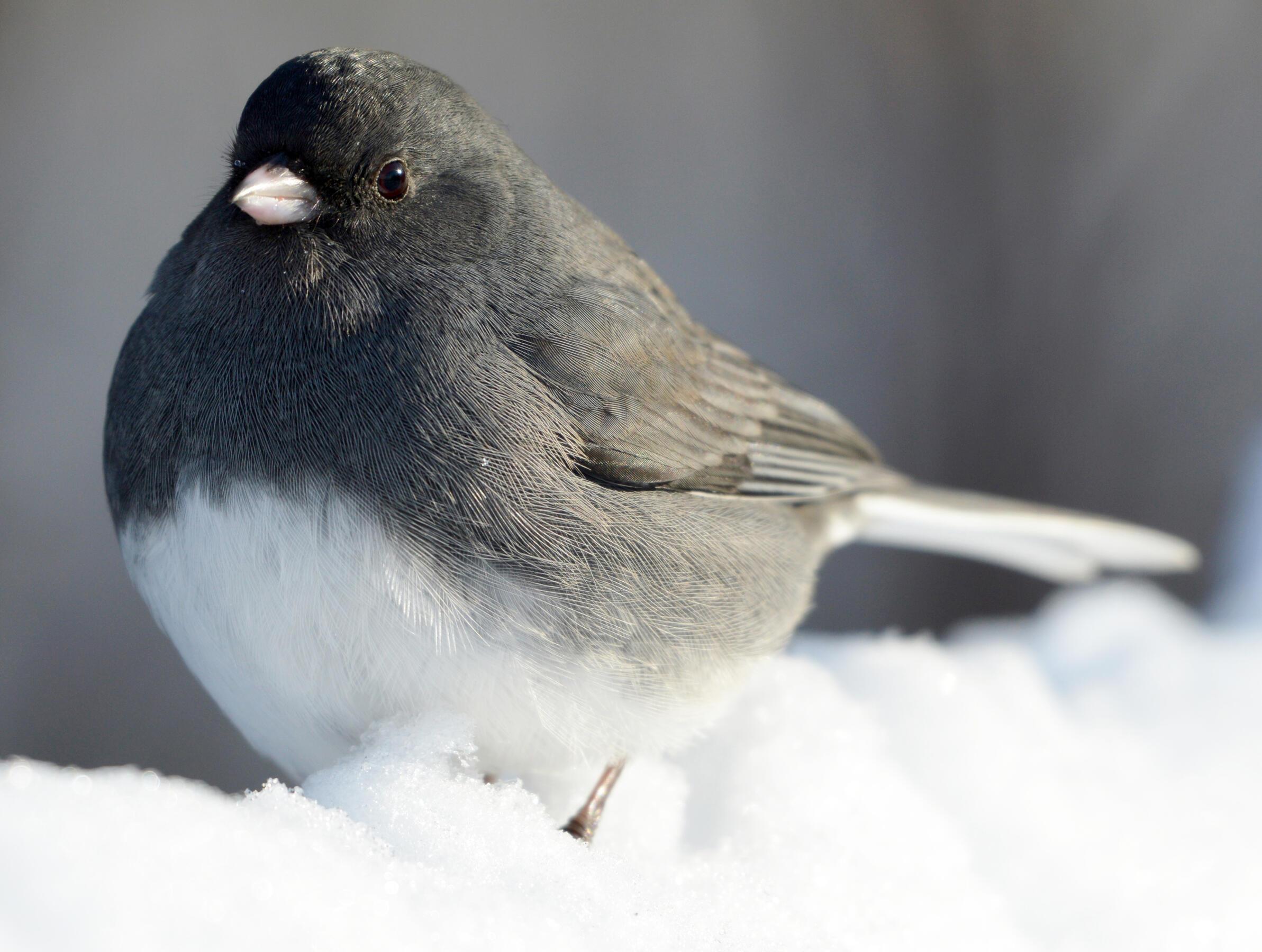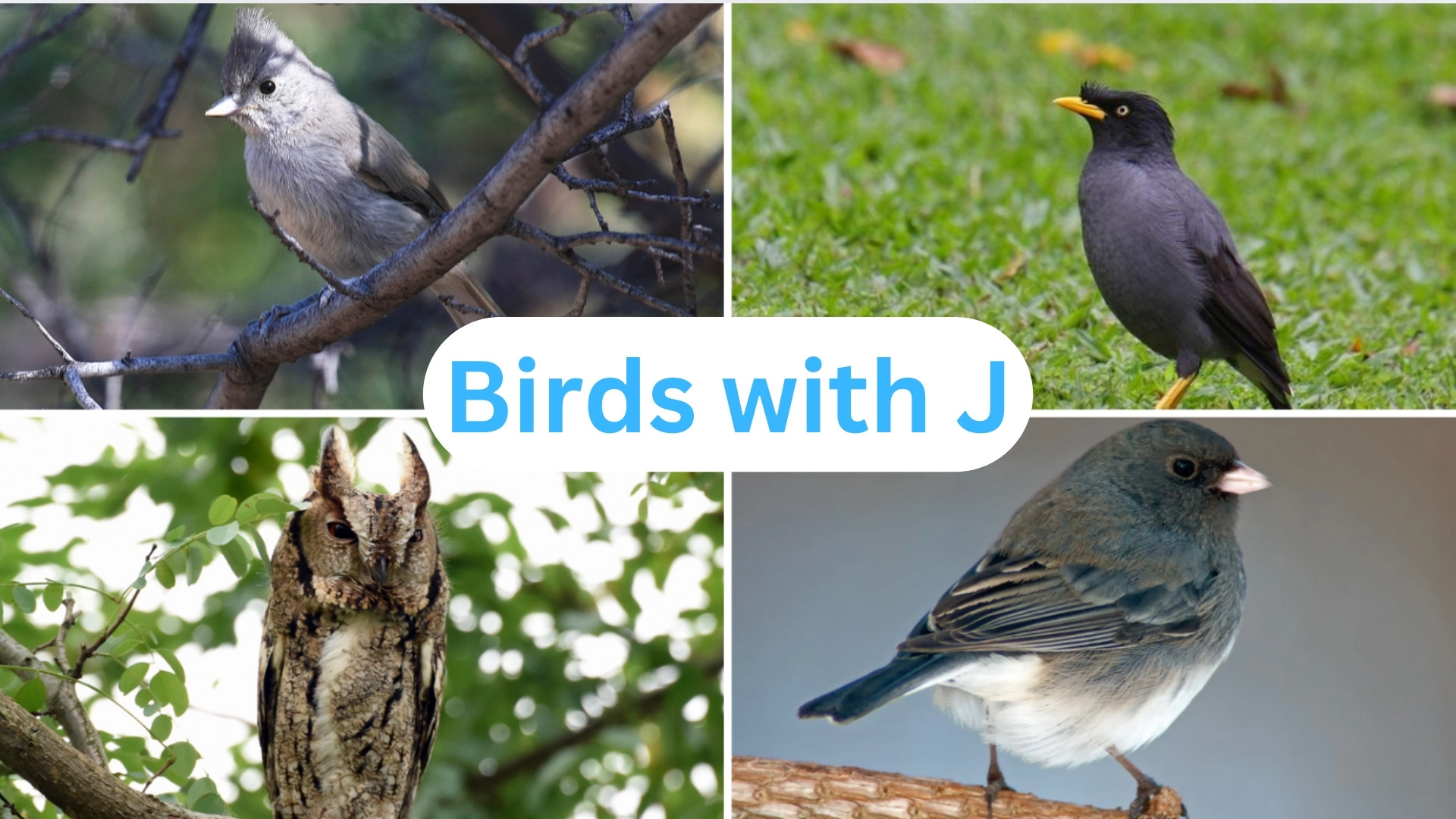
Birds are truly special creatures! They soar through the sky with colorful feathers, singing beautiful songs that wake us up in the morning.
What makes birds different from other animals? Birds have feathers, while no other animal does. They lay eggs with hard shells.
Most birds can fly using their wings, though some, like penguins and ostriches, cannot. Birds also have special light bones that help them stay in the air.
From the speedy Jabiru to the colorful Jay, birds whose names start with J are some of the most amazing creatures in the sky. They come in all sizes and colors, each with its special skills and habits.
Ready to learn about these unique J-feathered friends? Keep reading to check out the most interesting J-named birds from around the world!
Commonly Spotted Birds with Letter “J”
1. Jackdaw
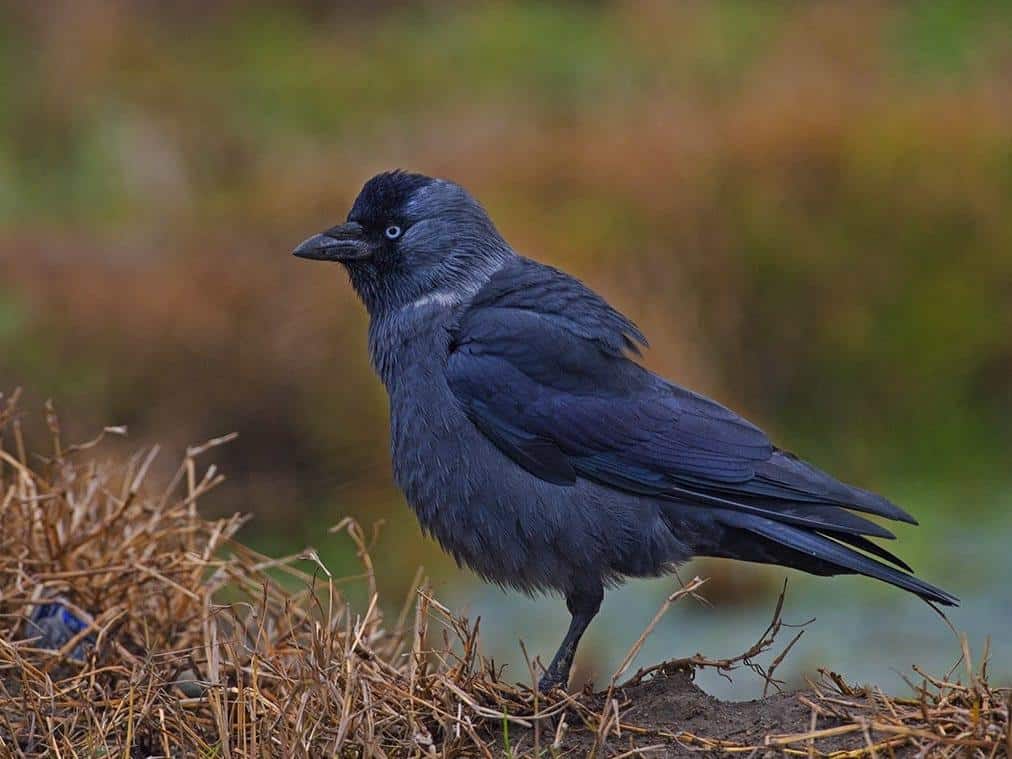
The Jackdaw is a small, black and grey member of the crow family known for its intelligence and social behavior. It’s often seen in towns, woodlands, and farmlands.
-
Region of Habitat: Europe, western Asia, and North Africa
-
Scientific Name:Corvus monedula
-
Feeding Habits: Omnivorous; eats insects, seeds, fruits, and food scraps
-
What Sound They Make: Sharp “kya-kya” or “chak” calls
Fun Facts
Jackdaws often mate for life and have been observed recognizing human faces. They sometimes use their eyes in visual communication, a rare trait among birds.
2. Jay
Jays are colorful, intelligent birds with a loud, screeching call, and are especially known for their acorn-hoarding behavior. They are often spotted in woodlands and parks.
-
Region of Habitat: Europe, Asia, North Africa
-
Scientific Name:Garrulus glandarius
-
Feeding Habits: Omnivorous; feeds on acorns, insects, fruits, and occasionally small animals
-
What Sound They Make: Harsh screeches and mimicked calls
Fun Facts
Jays can mimic the calls of other birds and even mechanical noises. A single jay can hide thousands of acorns each autumn for later use.
3. Jack Snipe
This small, difficult-to-find bird is known for its bobbing motion while feeding and is much quieter than other snipe species. It’s often hidden in wetlands or marshes.
-
Region of Habitat: Northern Europe and Asia during breeding, winters in southern Europe, Africa, and Asia
-
Scientific Name:Lymnocryptes minimus
-
Feeding Habits: Insects, larvae, and other small invertebrates
-
What Sound They Make: Very quiet; low grunts or ticking sounds
Fun Facts
Jack Snipes are extremely well-camouflaged and often rely on staying motionless rather than flying when approached. They’re among the few birds with a “bouncing” feeding behavior.
4. Java Sparrow
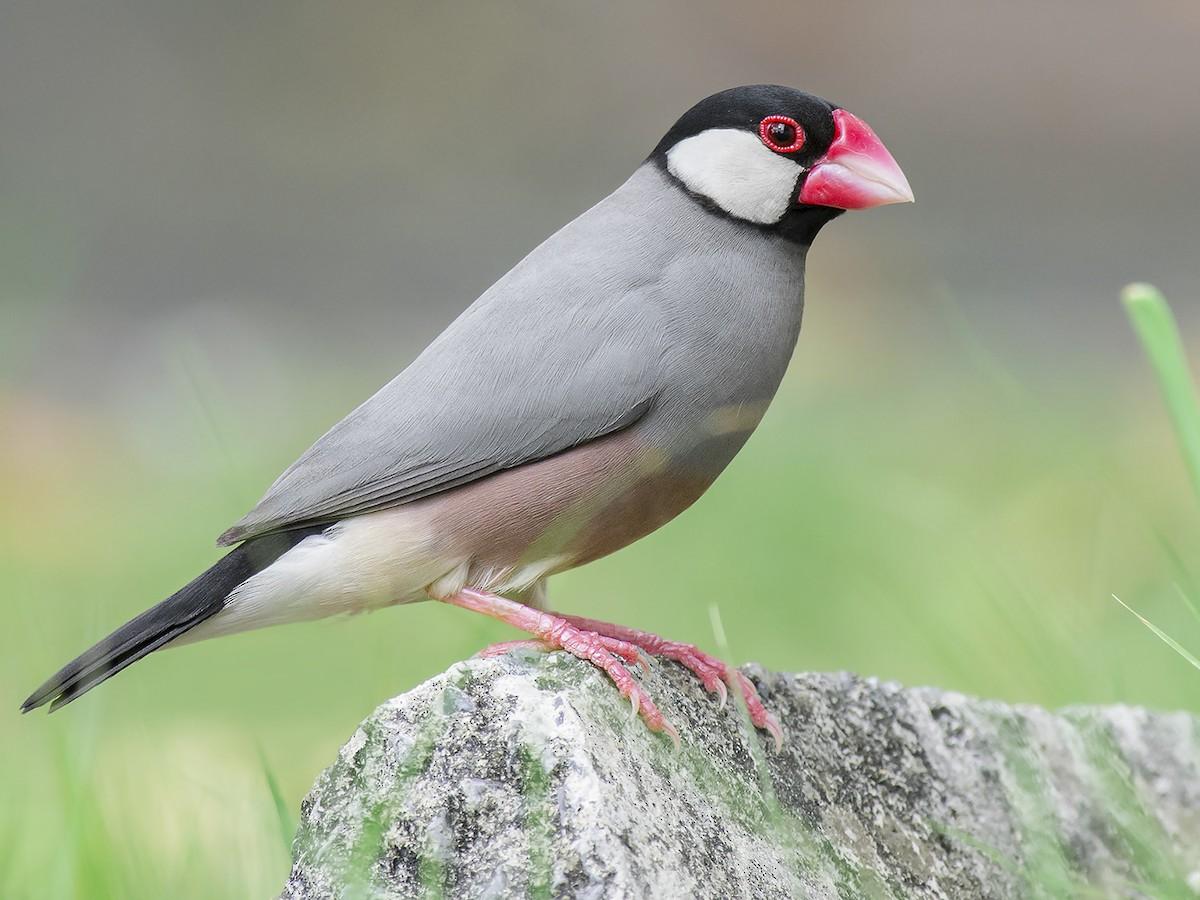
The Java Sparrow is a small, sociable finch with striking plumage and a large pink beak, often kept as a pet worldwide. It’s usually found near grasslands and rice fields.
-
Region of Habitat: Native to Java, Bali, and Bawean; introduced to other parts of Asia and the Pacific islands
-
Scientific Name:Padda oryzivora
-
Feeding Habits: Mainly seeds, particularly rice and grains
-
What Sound They Make: Soft chirps and repetitive peeps
Fun Facts
Despite being common in captivity, Java Sparrows are considered vulnerable in the wild. In some cultures, they have been associated with good fortune.
5. Japanese Quail
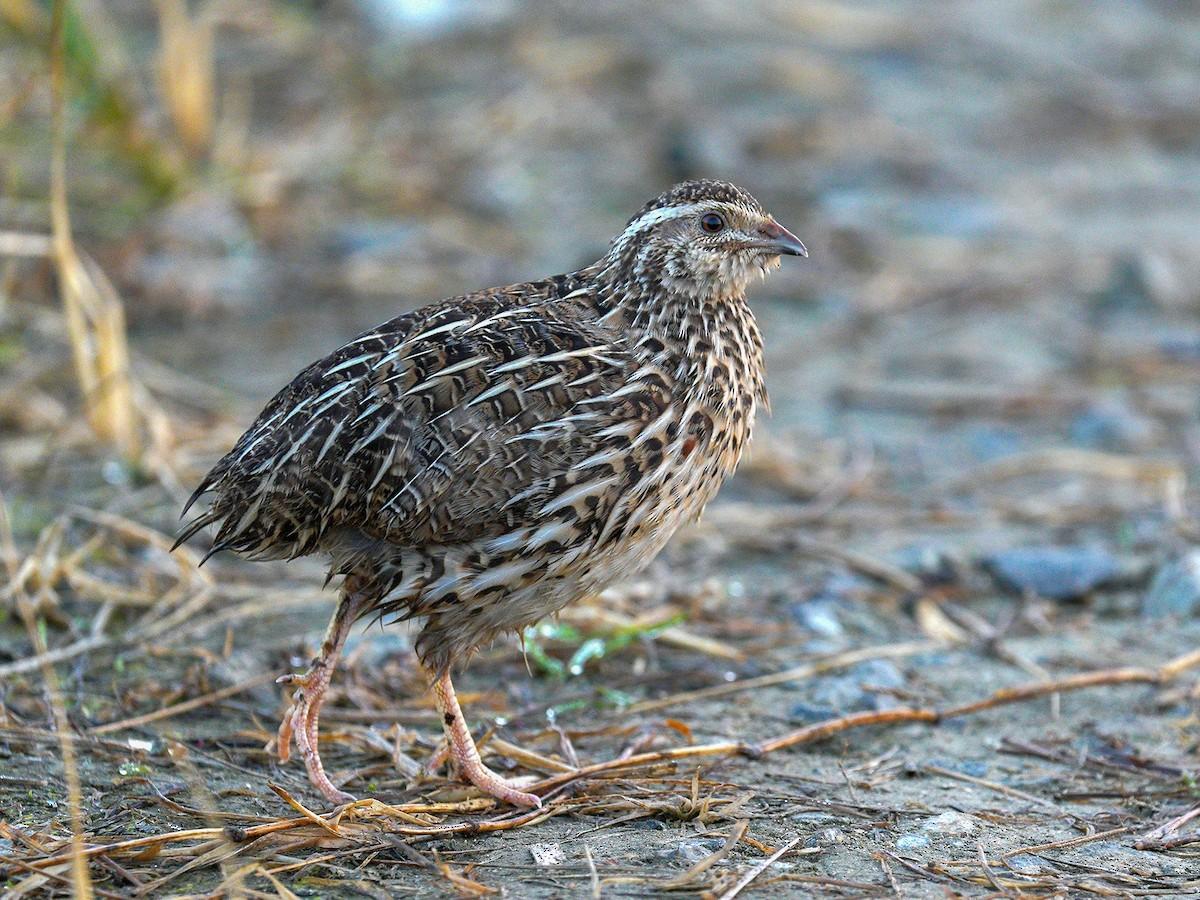
This small, ground-dwelling bird is known for its rapid running and egg-laying capabilities. It is both a wild bird and a commonly farmed species.
-
Region of Habitat: Eastern Asia, particularly Japan, China, and Korea
-
Scientific Name:Coturnix japonica
-
Feeding Habits: Seeds, grains, and small insects
-
What Sound They Make: High-pitched trills and whistling calls
Fun Facts
Due to their quick maturity, Japanese Quail are often used in scientific research. Their eggs are considered a delicacy in many Asian cuisines.
6. Jungle Babbler
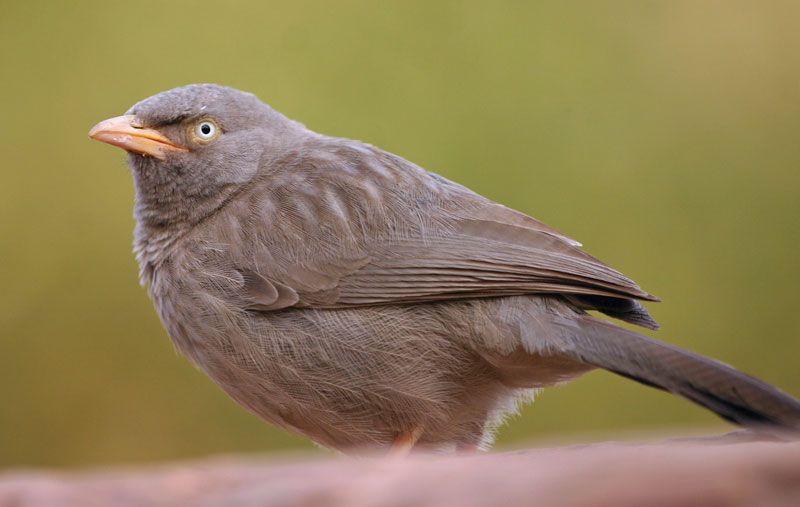
These sociable birds are known for their noisy chatter and tendency to move in flocks, earning them the nickname “Seven Sisters.”
-
Region of Habitat: Indian Subcontinent
-
Scientific Name:Argya striata
-
Feeding Habits: Insects, fruits, and grains
-
What Sound They Make: Harsh chattering and squeaky calls
Fun Facts
Jungle Babblers live in cooperative social groups and often help raise each other’s chicks. They are commonly seen hopping around in gardens and parks.
7. Japanese Tit
This small bird resembles the Great Tit and is a frequent visitor to gardens and woodlands. It’s agile and active, often seen flitting through branches.
-
Region of Habitat: Japan, Korea, and eastern Russia
-
Scientific Name:Parus minor
-
Feeding Habits: Insects, caterpillars, seeds, and berries
-
What Sound They Make: Clear whistles and chirps
Fun Facts
Japanese Tits have been shown to use syntax in their calls, a rare trait in non-human animals. They’re also known to nest in tree hollows and birdhouses.
8. Jungle Myna
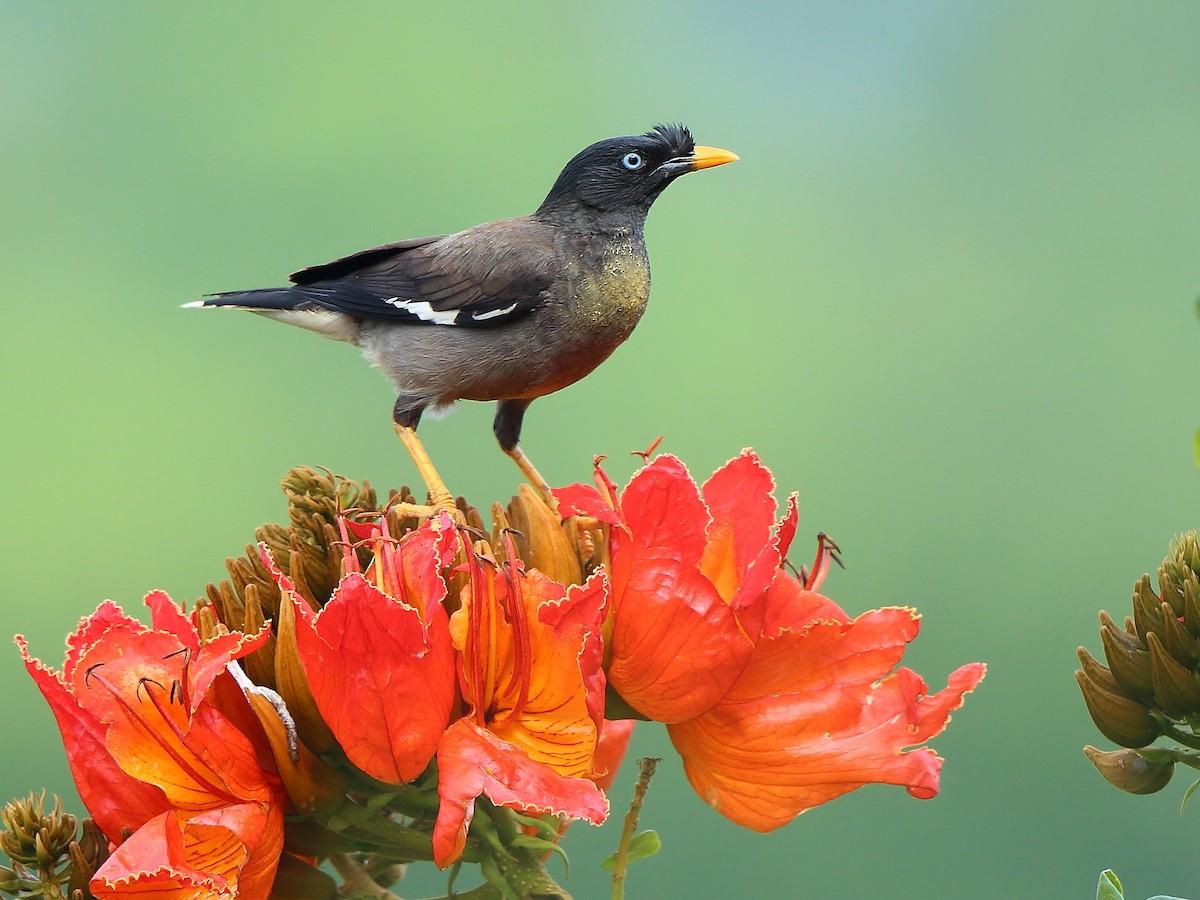
The Jungle Myna is a bold, adaptable bird often found near human habitation. It has glossy black plumage and bright yellow eye patches.
-
Region of Habitat: Indian Subcontinent and Southeast Asia
-
Scientific Name:Acridotheres fuscus
-
Feeding Habits: Omnivorous; feeds on insects, fruits, grains, and food waste
-
What Sound They Make: Chattering, whistles, and mimicry
Fun Facts
Jungle Mynas are excellent mimics and can copy human speech. They’re often seen perched on livestock, catching insects stirred up by the movement.
9. Japanese Robin
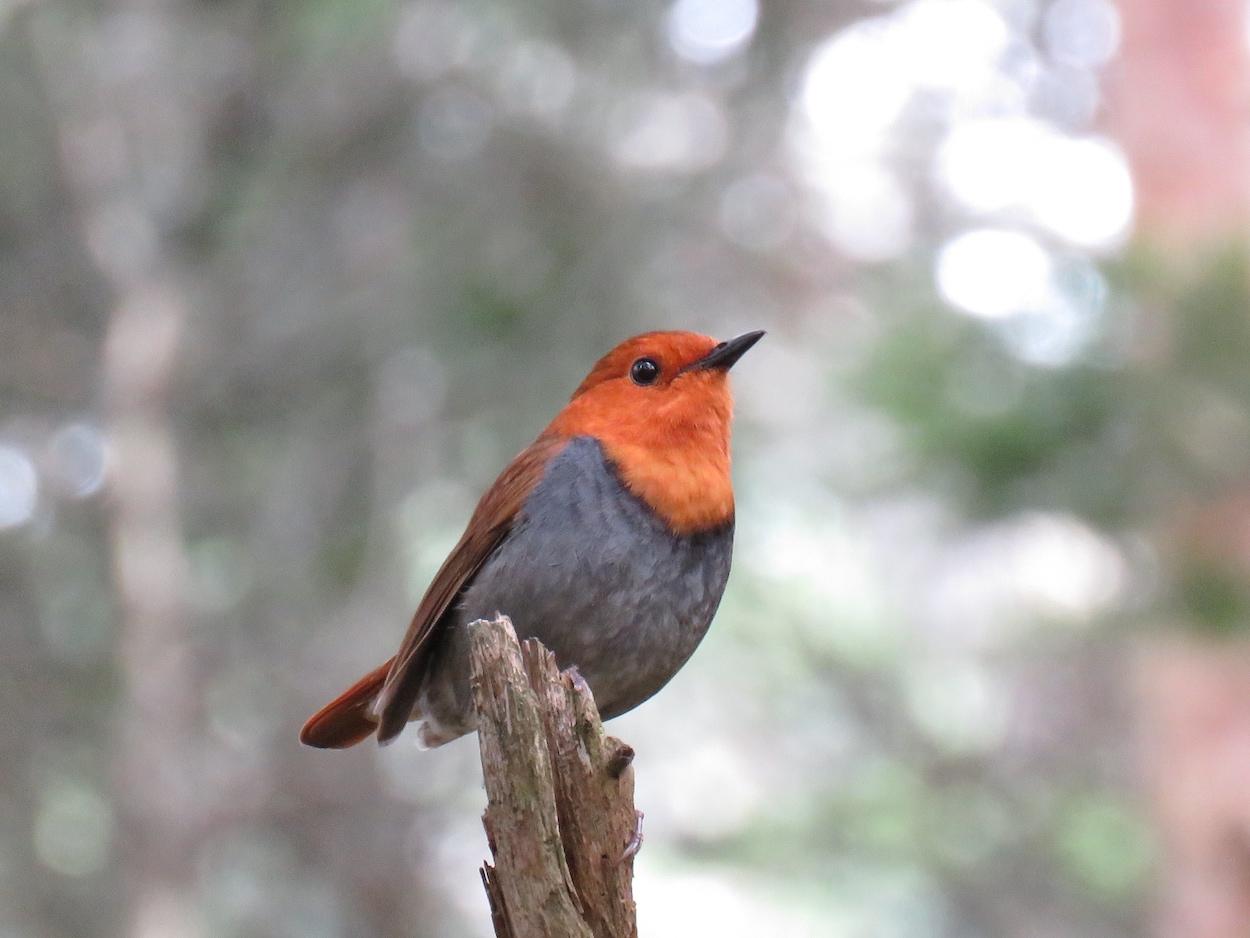
This shy, ground-dwelling songbird is admired for its vivid orange breast and sweet, melodious song. It’s often hidden in dense forest undergrowth.
-
Region of Habitat: Japan, Korea, and parts of eastern China
-
Scientific Name:Larvivora akahige
-
Feeding Habits: Insects, small invertebrates, and berries
-
What Sound They Make: Melodic whistles and warbles
Fun Facts
The Japanese Robin migrates seasonally and is considered a symbol of spring in Japanese culture. Males sing to defend territory and attract mates.
10. Japanese Wagtail
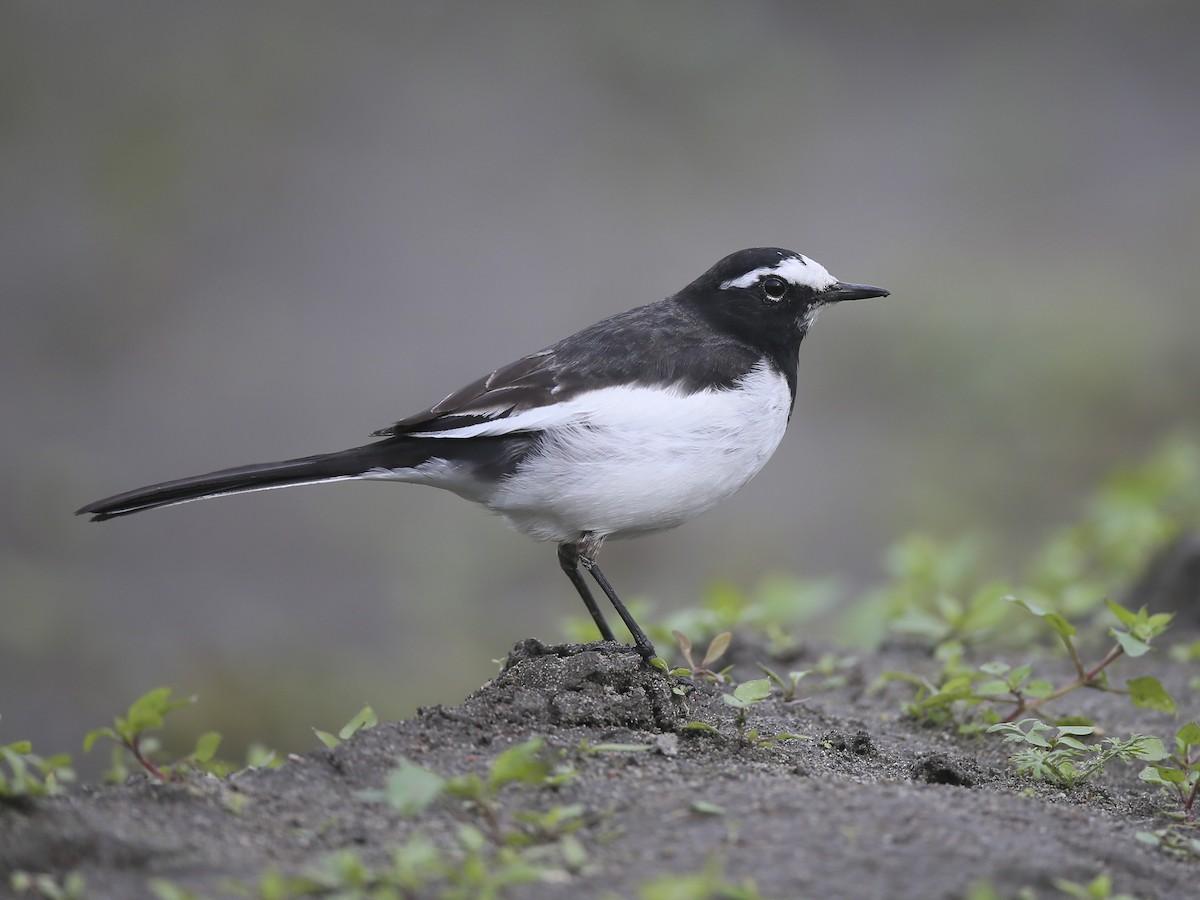
A graceful black-and-white bird known for its constant tail-wagging motion. Commonly seen near water bodies, roadsides, and open fields.
-
Region of Habitat: Japan and occasionally Korea and eastern China
-
Scientific Name:Motacilla grandis
-
Feeding Habits: Insects and aquatic invertebrates
-
What Sound They Make: Sharp “chee-chee” or “chip-chip” calls
Fun Facts
Japanese Wagtails are highly territorial and often seen chasing away intruders. Their wagging tail may help flush insects from the grass or signal alertness.
11. Japanese Waxwing

A sleek bird with silky plumage and a distinctive crest, often seen in small flocks during the winter. They feed heavily on berries.
-
Region of Habitat: Japan, eastern Russia, and northeastern China
-
Scientific Name:Bombycilla japonica
-
Feeding Habits: Mostly berries and fruit; occasional insects
-
What Sound They Make: High-pitched, buzzy trills
Fun Facts
Japanese Waxwings perform aerial acrobatics while catching berries mid-flight. They’re one of the few birds that may become intoxicated from fermented berries.
12. Jungle Owlet
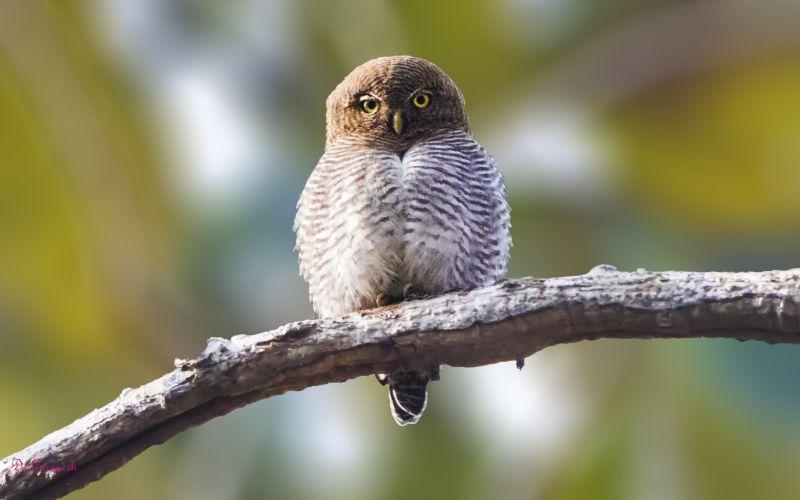
This small, rounded owl is active at dusk and dawn and is known for its tooting call. It is well-camouflaged in dense forest habitats.
-
Region of Habitat: Indian Subcontinent
-
Scientific Name:Glaucidium radiatum
-
Feeding Habits: Insects, small reptiles, and rodents
-
What Sound They Make: Repetitive “whoop-whoop” toots
Fun Facts
Jungle Owlets are diurnal and often seen sitting on branches in daylight—unusual for owls. They hunt from low branches using short bursts of flight.
13. Javan Myna
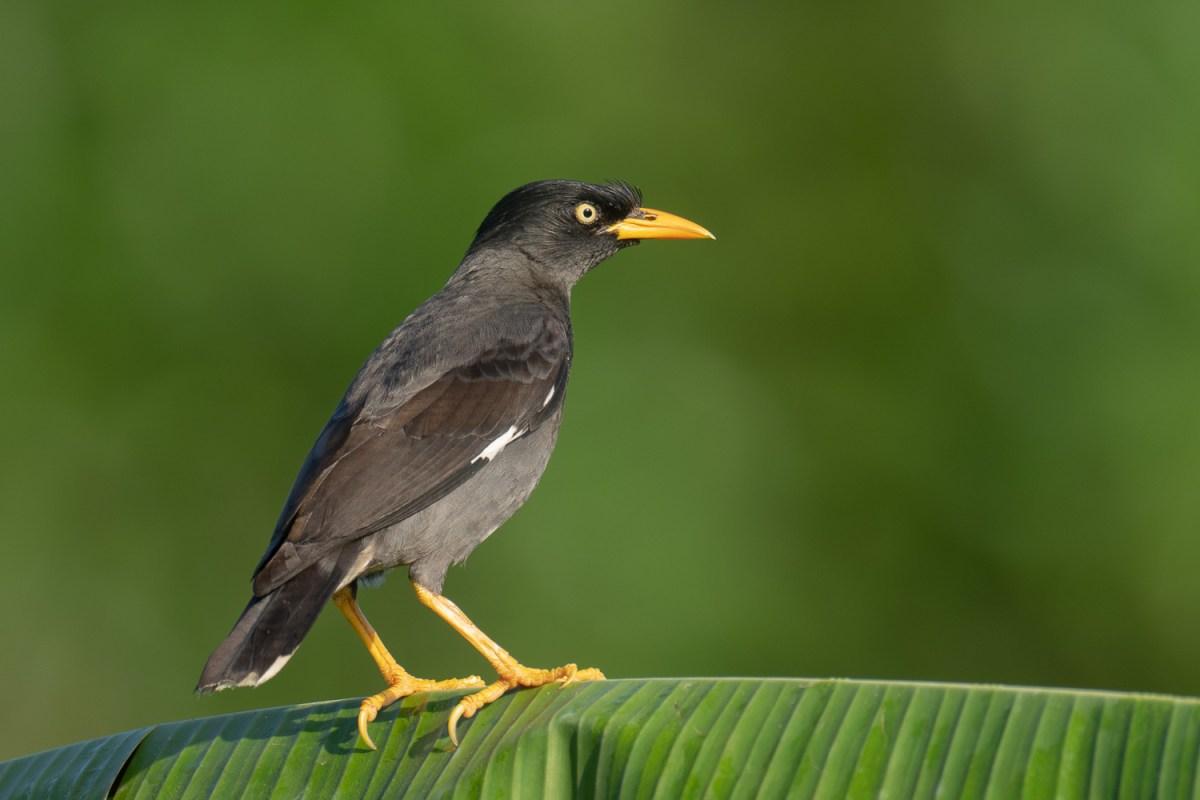
A highly adaptable bird, often seen scavenging in cities and towns. It has dark feathers with yellow eye patches and a confident walk.
-
Region of Habitat: Native to Java and Bali; introduced across Southeast Asia
-
Scientific Name:Acridotheres javanicus
-
Feeding Habits: Omnivorous; eats insects, fruits, scraps, and small animals
-
What Sound They Make: Loud whistles, squawks, and mimicry
Fun Facts
Javan Mynas thrive in urban areas and are known to mimic ringtones and car alarms. They’ve become one of the most successful invasive bird species.
14. Juniper Titmouse
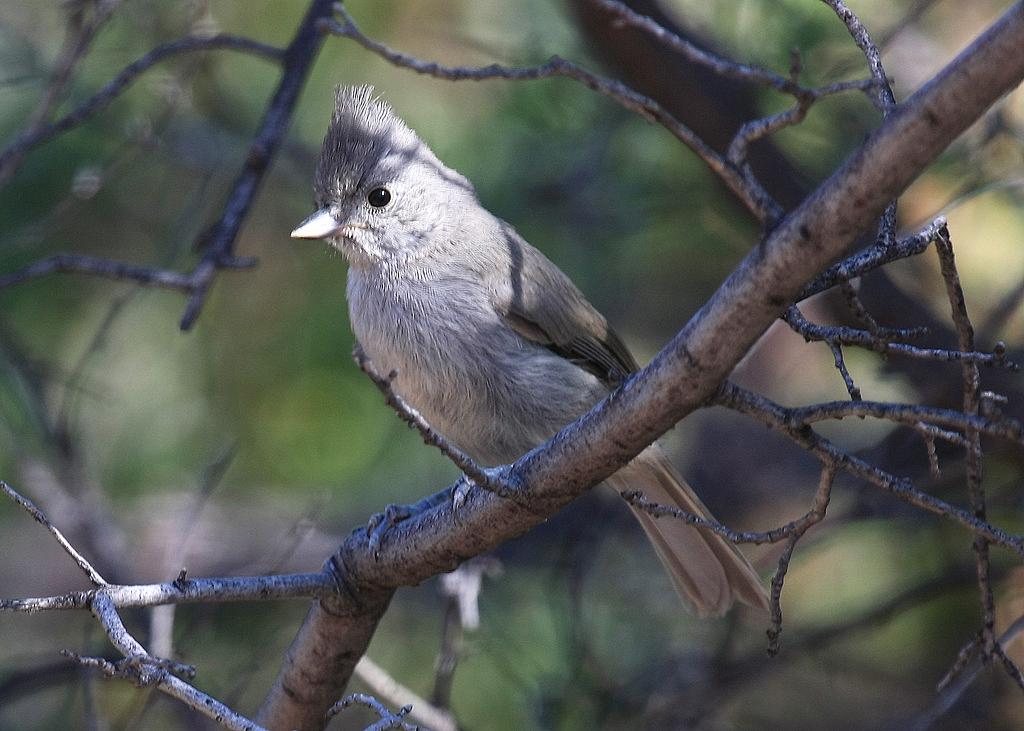
Its tufted crest and friendly personality easily recognize this small, gray bird. It’s often seen flitting through juniper and pinyon woodlands.
-
Region of Habitat: Southwestern United States
-
Scientific Name:Baeolophus ridgwayi
-
Feeding Habits: Seeds, nuts, and insects
-
What Sound They Make: Rapid “peter-peter-peter” calls
Fun Facts
Juniper Titmice nest in tree cavities and readily use nest boxes. In winter, they’re often part of mixed-species foraging flocks.
15. Junco, Dark-eyed
A small sparrow with a slate-gray body and white belly, commonly seen foraging on the ground during winter. It’s a frequent visitor to feeders.
-
Region of Habitat: North America
-
Scientific Name:Junco hyemalis
-
Feeding Habits: Seeds, insects, and berries
-
What Sound They Make: High-pitched trills and soft twittering
Fun Facts
Dark-eyed Juncos are often called “snowbirds” because they appear during winter. They exhibit color variations depending on their geographic location.
Some More Birds with the Letter “J”
16. Jabiru
17. Jackal Buzzard
18. Jackson’s Hornbill
19. Jackson’s Spurfowl
20. Jackson’s Widowbird
21. Jacky Winter
22. Jacobin Cuckoo
23. Jalca Tapaculo
24. Jamaican Becard
25. Jamaican Blackbird
26. Jamaican Crow
27. Jamaican Elaenia
28. Jamaican Euphonia
29. Jamaican Lizard Cuckoo
30. Jamaican Mango
31. Jamaican Oriole
32. Jamaican Owl
33. Jamaican Petrel
34. Jamaican Pewee
35. Jamaican Poorwill
36. Jamaican Spindalis
37. Jamaican Tody
38. Jamaican Vireo
39. Jamaican Woodpecker
40. Jambandu Indigobird
41. Jambu Fruit Dove
42. Jameson’s Antpecker
43. Jameson’s Firefinch
44. Jameson’s Snipe
45. Jameson’s Wattle-eye
46. James’s Flamingo
47. Jandaya Parakeet
48. Jankowski’s Bunting
49. Japanese Accentor
50. Japanese Bush Warbler
51. Japanese Cormorant
52. Japanese Green Woodpecker
53. Japanese Grosbeak
54. Japanese Leaf Warbler
55. Japanese Murrelet
56. Japanese Night Heron
57. Japanese Paradise Flycatcher
58. Japanese Pygmy Woodpecker
59. Japanese Reed Bunting
60. Japanese Scops Owl
61. Japanese Sparrowhawk
62. Japanese Thrush
63. Japanese Wood Pigeon
64. Java Sparrow
65. Javan Banded Pitta
66. Javan Blue Flycatcher
67. Javan Bush Warbler
68. Javan Cochoa
69. Javan Cuckooshrike
70. Javan Flameback
71. Javan Frogmouth
72. Javan Fulvetta
73. Javan Green Magpie
74. Javan Hawk-eagle
75. Javan Kingfisher
76. Javan Lapwing
77. Javan Munia
78. Javan Owlet
79. Javan Plover
80. Javan Pond Heron
81. Javan Scops Owl
82. Javan Sunbird
83. Javan Tesia
84. Javan Trogon
85. Javan Whistling Thrush
86. Javan White-eye
87. Javan Woodcock
88. Jelski’s Black Tyrant
89. Jelski’s Chat-tyrant
90. Jerdon’s Babbler
91. Jerdon’s Baza
92. Jerdon’s Bush Chat
93. Jerdon’s Bush Lark
94. Jerdon’s Courser
95. Jerdon’s Leafbird
96. Jerdon’s Minivet
97. Jerdon’s Nightjar
98. Jet Antbird
99. Jet Manakin
100. Jobi Manucode
101. Jocotoco Antpitta
102. Johanna’s Sunbird
103. Johannes’s Tody-tyrant
104. Jonquil Parrot
105. Jos Plateau Indigobird
106. Josephine’s Lorikeet
107. Jouanin’s Petrel
108. Joyful Greenbul
109. Juan Fernández Firecrown
110. Juan Fernández Petrel
111. Juan Fernández Tit-tyrant
112. Juba Weaver
113. Jungle Bush Quail
114. Jungle Nightjar
115. Jungle Prinia
116. Junín Canastero
117. Junin Grebe
118. Junin Tapaculo
119. Jacamar, Bluish-fronted
120. Jacamar, White-throated
121. Jacana, African
122. Jacana, Wattled
123. Jackass Penguin
124. Jackson’s Francolin
125. Jackson’s Pipit
126. Jamaican Lizard-Cuckoo
127. Japanese Skylark
128. Japanese Swamp Warbler
129. Japanese White-eye
130. Japanese Woodpecker
131. Javan Coucal
132. Javanese Lapwing
133. Jay, Black-chested
134. Jay, Blue
135. Jay, Eurasian
136. Jay, Purplish
137. Jay, Turquoise
138. Jay, Violaceous
139. Jerdon’s Bushchat
140. Juan Fernandez Firecrown
141. Juan Fernandez Petrel
142. Juan Fernandez Tit-Tyrant
143. Jungle Boobook
144. Junin Canastero
145. Junin Rail
Jumping to the End
Birds with names starting with “J” are some of nature’s most interesting creatures. From the morning Jungle Owlet to the tiny Java sparrow, these birds live in different places around the world.
Some, like the Jays, are common backyard visitors while others, like the Jacana, might only be seen on special bird-watching trips.
Each of these “J” birds has something special that makes it unique.
They have different ways of finding food, building nests, and raising their babies. Some are loud singers, while others are quiet hunters.
Learning about these amazing birds helps us better understand the wonderful world of nature. Next time you’re outside, keep your eyes open—you might spot one of these special “J” birds flying by!
If you’re interested in more informative bird, animal, and other wildlife content, feel free to click here and explore other blogs that you might enjoy!

